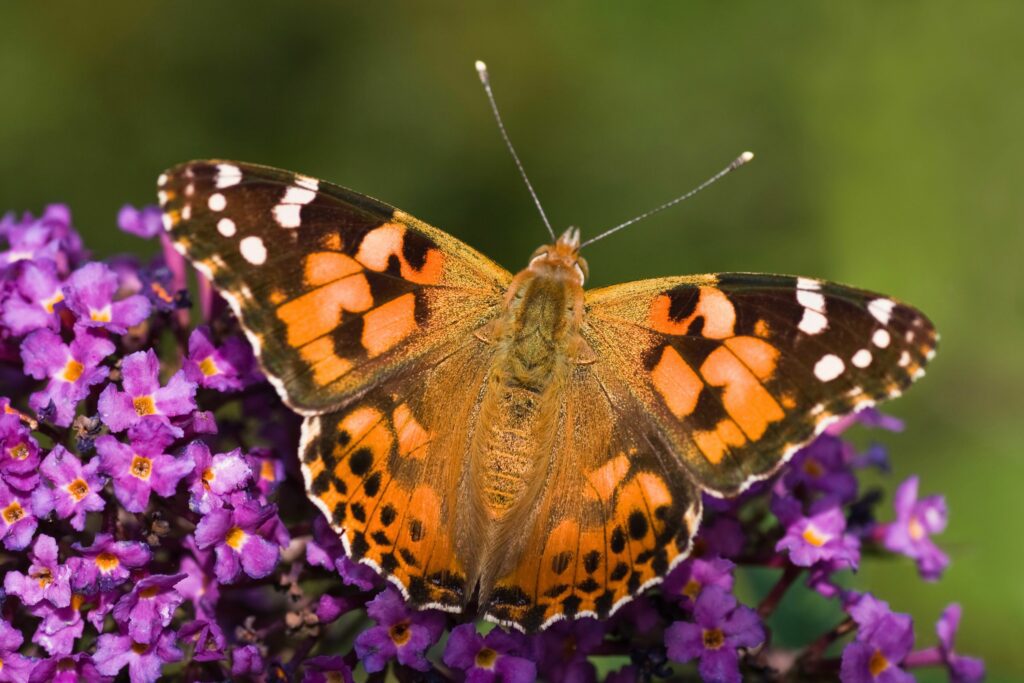On a beach in French Guiana, thousands of miles from their natural habitats, a flock of painted lady butterflies (Vanessa cardui) were spotted with tattered wings.
Some were fluttering about while others were sitting on the sand. An evolutionary biologist from the Botanical Institute of Barcelona named Gerard Talavera was the first to make the discovery back in 2013.
Scientists were baffled because the tiny orange, black, and white species are not normally found in South America, although they are common elsewhere around the world. So, how and why did the insects end up all the way in French Guiana?
After over a decade of investigations, researchers have concluded that the butterflies arrived in South America by journeying 2,600 miles across the Atlantic Ocean, a trek that did not consist of any breaks. It is the first time that a transoceanic flight has ever been recorded in an insect species.
“We tend to see butterflies as a symbol of the fragility of beauty, but science shows us that they can perform incredible feats,” Roger Vila, a co-author of the study and a researcher at the Institute of Evolutionary Biology in Barcelona, said. “There is still much to discover about their capabilities.”
Painted lady butterflies regularly migrate up to 9,000 miles from Europe to sub-Saharan Africa. However, they stop along the way to rest and replenish themselves. But in order to reach South America, they would’ve had to make the journey across the Atlantic Ocean in one go.
Insect migrations happen frequently, but they’re often difficult to track. Observations from amateur insect watchers and radar coverage are what scientists usually rely upon to study insect activity, but these methods are limited and do not always produce accurate results.
To figure out how the butterflies made it to French Guiana, the team of researchers looked at weather data from the weeks just before the butterflies’ arrival. They saw that the wind conditions were favorable, which likely helped the insects with their voyage from Africa to South America.
They also sequenced the butterflies’ genomes and learned that they were close relatives of populations in Europe and Africa.
Colette – stock.adobe.com – illustrative purposes only, not the actual butterfly
Sign up for Chip Chick’s newsletter and get stories like this delivered to your inbox.
Source link : https://www.chipchick.com/2024/07/a-flock-of-painted-lady-butterflies-flew-2600-miles-across-the-atlantic-ocean-to-south-america-marking-the-first-transoceanic-flight-ever-recorded-for-an-insect-species.html
Author :
Publish date : 2024-07-06 09:20:26
Copyright for syndicated content belongs to the linked Source.
